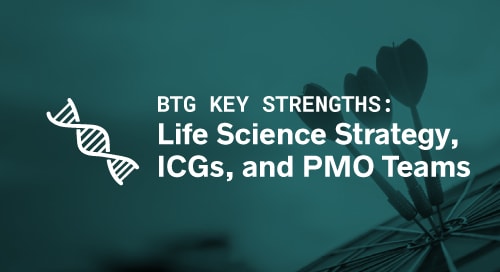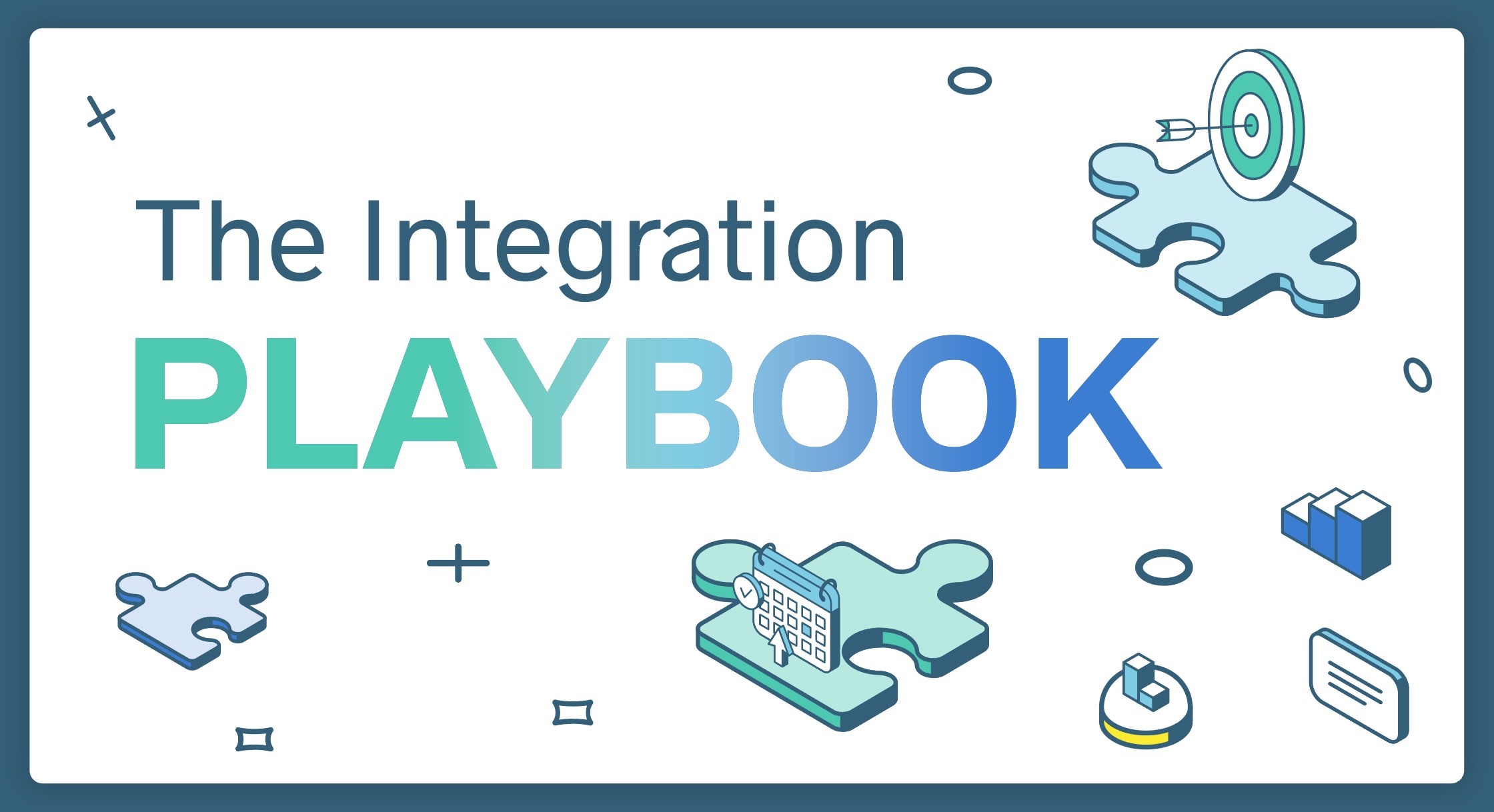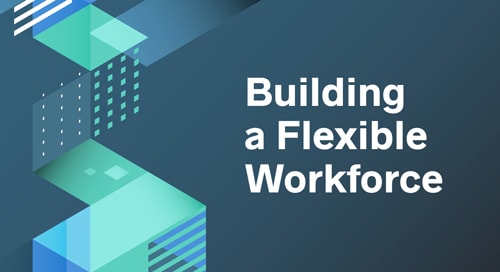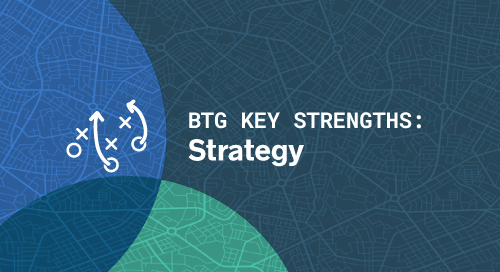This post originally appeared as a working paper from New Markets Advisors, a boutique consulting firm specializing in innovation opportunities and capabilities. Download a copy here.
Meet the Authors

Stephen Wunker
Managing Director, New Markets Advisors

Charlotte Desprat
Manager, New Markets Advisors
Lessons from the Pandemic
If Covid-19 taught us anything, it’s that organizations need to be better prepared for future uncertainty. While the last few months witnessed an extraordinary surge in innovation and agility, many companies were caught by surprise and had to act fast in order to survive. Disruptions like these are only going to increase in frequency and intensity—so what can we do to prepare ourselves?
Plotting the future has long been a dream for executives, and much ink has been spilled in recent years about scenario planning, wargaming, and other techniques. However, the path to resilience is rife with obstacles:
- Organizations are too focused on putting out fires to think about the long term, making them more likely to miss out on key opportunities
- Companies ignore major potential disruptions in their operations and markets, and fail to connect the dots when these disruptions happen in analogous sectors
- Long-term scenarios are seldom linked to short-term action implications
- Executives focus too narrowly by thinking in terms of projects, not their overall strategic position and portfolio
To address these challenges, we at New Markets developed FutureCasting—a process for plotting the future that combines action and rigor. This process is divided into four steps:
1. The Uncertainty Matrix
How to Map Out an Uncertain Environment
The first step in preparing for the future is knowing your environment. You can do this through a variety of research methods, from stakeholder interviews and competitive intelligence to deeper primary / secondary research (supplemented by customer research in Phase 2).
As you gather your data, it is important to structure it in an actionable way by separating out the facts from the assumptions. The Uncertainty Matrix is a powerful tool to do just that, as it divides your knowledge into four distinct categories:
Known Knowns
What are you pretty sure about? Now, how much of what is “known” is based on historical pattern and faith rather than contemporary data? What might you pressure-test? Are there big dependencies on certain factors which should be called into question, given how much has changed in the last year?
Unknown Knowns:
What knowledge may lurk elsewhere in your organization that might provide real-time information on the market? What are front-line staff seeing with regards to customer behavior and support needs, for example? What might suppliers tell you about how competitors in your industry are acting?
Known Unknowns:
What are you sure you don’t know? Be comprehensive, breaking your uncertainties into fields such as economics, customer behavior, new business models, and more.
Unknown Unknowns:
This quadrant can feel the emptiest, but it is often the most important. What factors might swamp other considerations? How might your context change in ways that upend large swathes of assumptions? This is where scenarios will be especially useful later in the process.
Knowing your environment includes knowing your own organization. Make sure to pressure-test any assumptions your team may have about your value proposition, strengths and weaknesses through both internal and external input.
2. Customer Behaviors
To make your business resilient over time, you must get as close as possible to your customers. While circumstances and obstacles to adoption may change, your customers’ underlying needs rarely do. If you know what your customers are trying to get done with your offering, you will build a much more sustainable organization.
This is where Jobs to be Done comes in. Unlike other frameworks, Jobs to be Done shifts the focus of customer research from past behaviors to discovering your audience’s real, underlying motivations. Jobs to be Done doesn’t just ask what your customers are buying, but why. By linking purchasing behaviors to their hidden needs and context, Jobs to be Done allows you to better understand your customers so that you can evolve with them.
To understand your customers even further, consider mapping out their entire journey from the events that trigger their purchase all the way to the aftermath of their experience. Combining journey mapping with Jobs to be Done gives you an extra degree of precision on each step of the process, including where it succeeds and where it falls apart. From there, you can pinpoint more granular opportunities and uncertainties.
But how do you know which customer behaviors are here to stay?
Customers can’t predict which of their behaviors will last and which ones won’t. But if you link these behaviors to their Jobs and context, and probe on these elements instead through interviews and surveys, you can start to assess and quantify their evolution over the long run much more reliably.
As you analyze your data, what signals should you watch out for? Our research on new markets shows there are six factors that lead to lasting behavior change. For more detail on how they play out, download our paper on assessing behavior change here:
- Core Motivations Shift
- New Approaches Are Appealing
- Inertia Ends...
- ...Only for It to Resume Afterward
- Critical Mass Is Achieved
- Infrastructure Locks In Change
3. Alternative Futures
At this point, you should have large amounts of data to sift through—from customer and stakeholder input to competitive intelligence and analysis of analogous industries. These trends will all contribute to shaping your business’s future, but to varying degrees. So how do you decide what to focus on?
The key is to pick out the most uncertain and impactful trends of the bunch. These trends will become the axes of your scenario matrix / matrices, allowing you to map out what the future holds in each quadrant (see example below).
Next, examine the future in each quadrant and pinpoint the relevant threats and opportunities. Working your way backwards, plan out the action steps you can take today to address each of them.
A common approach is to build worst-, middle- and best-case scenarios. The intent behind this is right: you should consider all possible outcomes, including those that are less than ideal. However, this method assumes that there is only a single kind of best-, middle-, and worst-case scenario—when in reality, different trends could collide to form a host of scenarios, many of which could be overwhelmingly positive or negative.
Applying Futurecasting to Retail Banking
With the rise of fintech and increasing importance of convenience, a retail bank could use FutureCasting to devise its channel strategy with the long-term goal of increasing customer loyalty.
Note: You can use more than two axes at once or multiple matrices side by side. Some museums, for example, planned their post-pandemic scenarios using three axes—programs, operations, and funding.
4. Your Investment Portfolio
Looking at the opportunities you surfaced in each scenario, decide how many bets to make, of what type, at what level, and with which timeframe. This is where having clear guidelines and expectations around investments from the get-go will be critical.
But having a shortlist of potential investments is not enough—you must organize them in a coherent, flexible portfolio plan. Over time, each opportunity will become more or less appealing, depending on the likelihood of their associated scenario. For this reason, make sure to identify and monitor key signals tied to each scenario. As these signals evolve, you can adjust the level of investment you make in a given opportunity accordingly.
The goal is not only to prepare for the future, but also to shape it: as you experiment with new ideas, map out the steps you can take to precipitate that evolution (e.g., with customers, with other key decision-makers).
Sample Portfolio Map
FutureCasting in Action
Case Study in Healthcare
Project Objective
A large U.S. healthcare provider to employers wanted to understand what revenue expansion opportunities existed beyond their offering and devise a portfolio strategy based on their long term potential.
Final Outcome
By the end of New Markets Advisors' FutureCasting project, our client had a sophisticated understanding of its blind spots and a roadmap to plan against possible futures. The client could approach future disruptions with more confidence and resilience.
1. Separate the Facts from the Assumptions
Through market trends analysis and internal briefings, our team surfaced a variety of potential revenue expansion opportunities to explore further, including around tailored telehealth applications and occasion-specific clinician engagement, with key assumptions and uncertainties tied to each.
2. Determine Coming Customer Behaviors
We then conducted 30 in-depth interviews with current target customers to surface new opportunities and evaluate the appeal of each idea by linking them to their Jobs to be Done.
3. Develop Alternative Futures
Using the data we had gathered during Phases 1 and 2, we prioritized a shortlist of opportunities to focus on and selected the most uncertain trends with the greatest impact on their success. From there, we built out a two dimensional matrix displaying each scenario to prepare for.
4. Create Your Portfolio Plan
Having mapped out the steps needed to address each scenario, we built out a balanced portfolio strategy that accounted for opportunity size, appeal to employers, operational synergies, company advantages, risk, and other factors. Critically, we laid out a set of signals to watch out for over time, so that our client could pivot based on which outcome seemed more likely.
FutureCasting in Practice: FAQ
How does FutureCasting fit in with my company's strategic plan?
Many organizations starting a FutureCasting exercise already have a strategic plan in place. So how do you incorporate the results of your FutureCasting process in your company’s long-term vision?
The best way to guarantee that your results are heard is to include your company’s current assumptions about the future in your research. By pressure-testing your leadership’s longstanding ideas, your FutureCasting exercise will not simply lead to a potentially separate strategy for the future, but also directly verify or invalidate your company’s current thinking. Indeed, it is far more likely for the company to dismiss your recommendations if they seem irrelevant to its current trajectory than if they question or confirm it.
How do I overcome people's resistance to change?
Resistance to large change efforts is very common, particularly in large corporations with deeply engrained assumptions about the market. It is easier to do business as usual than to adjust to a different reality. So how do you make sure your FutureCasting exercise is effective, especially if it forces your team to question their current approach?
Here are a few pointers to get you started. First, you want to get the right stakeholders and decision-makers involved in your exercise from the get-go (or at least made aware of it). Second, telling a compelling story will be key when sharing out your results. And third, set up a system with your FutureCasting team that rewards decisive action and an inexpensive head start on new initiatives to encourage forward thinking (e.g., incentives for teams that cut their losses early).
Who should be involved in this effort?
It is critical to include the people directly responsible for translating strategies into granular action plans, and the stakeholders responsible for giving the go-ahead on these initiatives.
But it isn’t enough to simply involve the key decision-makers inside the organization—your FutureCasting exercise must account for diverse perspectives as well. Companies all too often fail to grasp the full picture of their environment by selecting a narrow set of inputs. Avoid this pitfall by including people from a wide range of backgrounds. This includes a mix of functions / roles; both longstanding and newer employees; as well as established leaders and known contrarians. In addition to guaranteeing you a fuller understanding of your context, including such a wide range of people will make internal buy-in for your results much more likely.
Closing Thoughts
As we have seen with Covid-19, planning for uncertainty is far easier said than done. Plotting the future has long been of great interest to executives, and the last few decades saw a proliferation of tips and tricks to do so—especially in the form of scenario planning. But for all its good intentions, scenario planning has become synonymous with lengthy processes yielding few action items.
To address these challenges, we developed FutureCasting to plot the future in a rigorous and actionable way by:
- Staying market-focused and customer-centric
- Drawing clear lines from macro issues to micro action implications
- Not only preparing for the future, but also shaping it
GET THE SKILLS YOU NEED
Thousands of independent consultants, subject matter experts, project managers, and interim executives are ready to help address your biggest business opportunities.
About the Author
Follow on Linkedin Visit Website More Content by New Markets Advisors





















